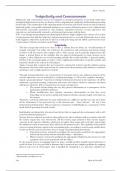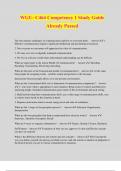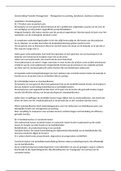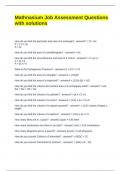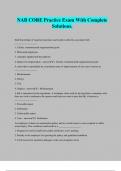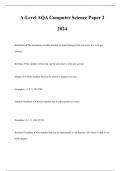Subjectivity and Consciousness
Subjectivity and consciousness need to be examined as emergent properties of our brain rather than
metaphysical phenomena as they are features of the computational complexity of information processing
by the brain. The examination of the operating modes of neurons and neural circuits reveals an intrinsic
relational quality (una qualità relazionale intrinseca) as: sensory elaboration proves to be relational and
self-centered, necessarily associated to vital, hedonic, emotional relevance of each experience and
external cue, and intrinsically oriented to a behavioral interaction with the latter.
N.B.: even though epistemological and philosophical debates might enlighten the concept of an action
of consciousness that adds the subjective and personal perspective to a neural elaboration; here is what
really happens: subjectivity is present ab initio in neural processing and not added a posteriori by some
“consciousness” function of unclear neural basis.
Subjectivity
- The first concept that needs to be clear is that: a neuron does not detect an “overall intensity of
synaptic activation” but rather the synchrony, the consistency and continuous interaction among
activities of all the neurons that synapse with it. This concept can be perfectly depicted into this
image: a neuron listens to the melodies that are played synchronously by many neurons on its
synapse; it then elaborates an overall emerging melody that would reproduce a general tonality,
rhythm of the incoming signal or rather a more sophisticated elaboration of specific melodic and
harmonic details in the concert it is listening to.
Again, it means that a neuron does not respond to a datum but it detects specific relations among
the patterns of activity of the neurons that are connected to them and may thus attribute a consistent
meaning to such complex patterns of activity.
- Through neuronal plasticity, any novel pattern of neuronal activity (any unknown element of the
current experience) can be associated to existing knowledge: it will receive cognitive meaning –
logical, causal, operational – based on its relations with known elements in the experience. It will be
attributed a personal meaning (connection with some vital values) related to emotions associated
with known elements. These concepts have two main consequences:
o The neural circuits change the way they process information as a consequence of the
information itself they elaborate.
o Plastic modifications have intrinsic associative characteristics in that they occur
depending on the precise spatial and temporal relations among synaptic activations on
the neuron.
Therefore, each brain elaborates the same information in a different, specific way that arises from
all the information it has processed up to this moment and – more relevant – the way it has
elaborated such information. This accounts for a emergence of individuality as a consequence of the
mode itself of operating of neural circuits.
- Individuality and subjectivity also arise from the fact that we approach the environment with a self-
centered relational perspective.
Sensory data are analyzed not only in what pathway but also in relation with one another and with
the sensory organs they were detected by. All the sensory maps (related to their sensory organs)
converge in the superior colliculus, which puts in register these maps with each other and remaps
the stimulus in terms of movement: this is relayed to the parietal cortex. The capability of the parietal
cortex to remap all sensory inputs in the surrounding space, according to a motor map, enables these
circuits to directly activate premotor areas in charge of programming movements:
o Canonical neurons: activated to prefigure the movements needed for the appropriate
behavioral interaction with the identified object – affordance.
o Mirror neurons: activated to prefigure the appropriate9 finalized action (motor act with
a purpose) that can be performed with the object.
So the parietal cortex, in mapping objects in space, actually predicts possible motor behaviors to
reach for them. It is very powerful as humans tend to represent any complex problems by mapping
them in some sort of virtual space: time is handled by visualizing it as a time line, numbers are
9 Heuristically consolidated as so.
226 Body At Work II
, Enrico Tiepolo
visualized as a series in space, even emotions are given a spatial representation (a dear friend is
internally represented as “close” and occupying a “larger room” in one’s visual field and inner life).
Every cue is therefore given a meaning not only in terms of its possible vital relevance, but also with
respect to its relevance to one’s own actions, aims and operative plans.
This way the interpretation of each cue becomes a clearly subjective one, colored by emotional
valence, characterized by possible usefulness and appropriateness to achieve specific aims: it
becomes a clearly subjective and personal interpretation.
- A behavior that is clearly directed in one’s best interest does not need consciousness – attention and
intentionality – but is does not mean at the same time that this behavior is involuntary and
unconscious. In these situations, we can say that we act in an auto-pilot mode.
The parietal cortex does not make us react to every cue we detect: instead, basal ganglia are in
charge of select among the possible cue-driven behaviors based on hedonic value. As long as nothing
surprising happens, the this type of behavior can be defined as a cue-driven reactive behavior.
- The what and where pathway information are relayed into the perirhinal and the parahippocampal
cortices and from there converge in the entorhinal cortex, the main getaway to and from the
hippocampus. The hippocampus is then going to integrate these two kinds of information by
generating a spatial and temporal context.
The hippocampus transforms a huge set of mutual spatial relations among objects into a
contextualized perception of the environment.
o The hippocampus is strongly and bidirectionally connect to the amygdala, the main
subcortical structure in charge of attributing a vital relevance to the current experience.
o The memorizing capability of the hippocampus is enhanced if synchronously the
amygdala points out that experience as vital relevant.
o At the same time, the hippocampus helps in correctly evaluating possibly relevant clues
by contextualizing them e.g. lion in a cage.
More relevantly, the input from emotion-related subcortical structures makes the experience crated
by the hippocampus emotionally-colored.
- Most neurons project to thousands of other neurons, so that each bit of information gets examined
in many ways, in parallel, by many neurons that put it in relation with multiple sets of other data: as
a result, information is continuously rearranged and read according to many interpretive criteria
and attributed a meaning (perceptual, emotional, functional, operative) thanks to such logical
reorganization, through associations and generalizations. This way information is transformed into
meaningful information, i.e., into knowledge.
- To abstract and manipulate a concept our brain posses a set of symbolic references. It is related to
the concerted activity of a number of neural networks in the brain aimed at identifying the possible
interactions with such an object i.e. subjective and personal relevance – meaning. Internal
representations of external cues are general, abstract references to categories of objects / experiences
that give rise to proto-concepts such as that of a “fearful sound,” even before any words are coined to
refer to them. The same holds for a “hurting/burning/soothing object,” a “reassuring/menacing
face,” a “pleasant/bitter/sour food.”
The “proto-concepts” here discussed have a clear pre- verbal nature; still, they can sustain a
rudimentary form of pre-verbal thought, of non-verbal communication (by mimicking
reactions/emotions) and even verbal communication (onomatopoeic, “boom” for a thunder,
“meow” for a cat).
227 Body At Work II

